
The Moses H. Grinnell was a 19th-century pilot boat built in 1850 for the New York maritime pilots. She was designed by the yacht designer George Steers. The Grinnell was the first pilot boat to feature a fully developed concave clipper-bow, which was to become the New York schooner-rigged pilot boat's trade mark. This new design was the basis for the celebrated yacht America.

The Richard K. Fox, first named Lillie, was a 19th-century pilot boat built in 1876 for Boston Pilots. She was designed by model by Dennison J. Lawlor. She was one of the most graceful and attractive of the Boston pilot-boats and represented a trend toward deep-bodied boats. She was later sold to the New York pilots and renamed Richard K. Fox in honor of the famous sportsman and publisher of the Police Gazette. In the age of steam, she was sold in 1896 to the Marine Hospital Service.

The Sylph was a 19th-century pilot boat first built in 1834, by Whitmore & Holbrook for John Perkins Cushing as a Boston yacht and pilot-boat for merchant and ship owner Robert Bennet Forbes. She won the first recorded American yacht race in 1835. She was a pilot boat in the Boston Harbor in 1836 and 1837 and sold to the New York and Sandy Hook Pilots in October 1837. She was lost in winter of 1857 with all hands during a blizzard off Barnegat, New Jersey. The second Sylph was built in 1865 from a half-model by Dennison J. Lawlor. The third Sylph was built in 1878 at North Weymouth, Massachusetts for Boston Pilots. She was sold out of service in 1901, after 23 years of Boston pilot service.
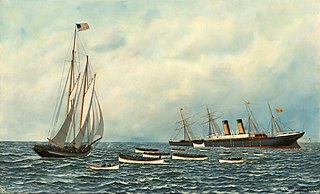
The Phantom was a 19th-century Sandy Hook pilot boat built in 1867 from the designs by Dennison J. Lawlor. The schooner was considered a model for her type with a reputation for being very fast. She helped rescue the passengers on the steamship SS Oregon when it sank in 1886. She was one of the pilot-boats that was lost in the Great Blizzard of 1888. The Phantom was replaced by the pilot-boat William H. Bateman.

The D. J. Lawlor was a 19th-century Boston pilot boat built in 1881 at North Weymouth, Massachusetts. The schooner was considered the largest for her type, noted for her seaworthiness and heavy weather performance. She was named after the prominent Boston shipbuilder Dennison J. Lawlor. She was struck by a fishing schooner Horace B. Parker, in 1895, and was replaced by the pilot-boat Liberty in 1896.
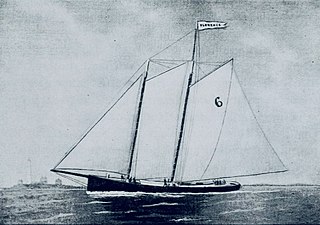
Florence was a 19th-century Boston pilot boat built in 1867 from a model by Dennison J. Lawlor for William C. Fowler. The vessel had a reputation for being fast under sail. She had a long career in the Boston service, skippered by many famous pilots. She was the oldest pilot-boat in the service. In 1897, she was sold to a Portland, Maine group for fishing and yachting excursions. The pilot boat America, No. 1, was launched on April 19, 1897, to replace the Florence.
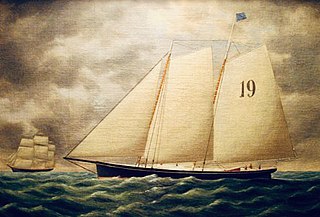
Jacob A. Westervelt was a 19th-century Sandy Hook pilot boat designed by naval architect John W. Griffiths and built by Jacob A. Westervelt in 1853. She was one of the fastest pilot-boats in the fleet. In 1858, while attempting to board the British steamer Saxonia she was fatally run into and sank outside of Sandy Hook. The Edmund Blunt, was built to replace her.
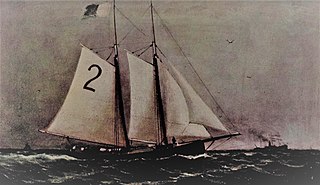
The Eben D. Jordan was a 19th-century Boston pilot boat built in 1883 by Ambrose A. Martin in East Boston for Captain Thomas Cooper. Her namesake was Eben Dyer Jordan, the founder of the Jordan Marsh department stores. In 1892, she was sold to the New York Sandy Hook pilots. She was one of the last of the pilot-boats that were discarded in an age of steam and electricity in 1896.

The Caldwell H. Colt was a 19th-century Sandy Hook pilot boat, built in 1887, at the Samuel H. Pine's shipyard in Greenpoint, Brooklyn, for a group of New York Pilots. She was one of the pilot-boats that was in the Great Blizzard of 1888, that was one of the most severe blizzards in American history. In 1903, she was sold to a group of Pensacola, Florida pilots.
The David Mitchell was a 19th century Sandy Hook pilot boat built in 1846 at Baltimore, Maryland, for a group of New York Pilots. She was launched at the John A. Robb shipyard in East Baltimore. She was sold to the Pensacola, Florida pilot fleet in 1875.

The Christian Bergh was a 19th-century Sandy Hook pilot boat built in 1851 at the Westervelt & Co. shipyard. She later became a Pennsylvania pilot boat until her service ended in 1886 when she became an oyster boat in the Delaware Bay. She was named after Christian Bergh a prominent shipbuilder in New York and a close friend of Jacob Westervelt.

The Nettle was a 19th-century Sandy Hook pilot boat built in 1844 by S. Hall of East Boston, Massachusetts for the New York Pilots. She helped transport maritime pilots between inbound or outbound ships coming into the New York Harbor. In 1868, she found the wreck of the bark Henry Trowbridge, and towed her to Sandy Hook. The Nettle, sank in 1876 in the Pensacola Bay. The sunken wreck was removed in 1878 to improve the Pensacola harbor.

The Centennial was a 19th-century wood pilot boat built in 1876 by Robert Crosbie and designed by Boston designer Dennison J. Lawlor for New York and New Jersey pilots. She was one of the pilot-boats that survived the Great Blizzard of 1888. By 1898, in the age of steam, she was the last pilot boat left in the fleet; then sold in 1898 to a group in Montego Bay, Jamaica.
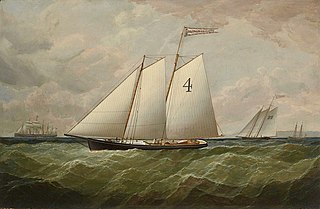
The Abraham Leggett was a 19th-century New York pilot boat built by Daniel Westervelt at the Westervelt & Co. shipyard. She helped transport New York City maritime pilots between inbound or outbound ships coming into the New York Harbor. In 1866, Pilot Michael Murphy was on the Abraham Leggett when the bark Emilie ran into the pilot boat. In 1879, the Abraham Leggett was hit and sank by the steamship Naples from Liverpool. She was replaced by the pilot boat Alexander M. Lawrence.

Edmund Blunt was a 19th-century New York pilot boat built in 1858 by Edward F. Williams for the New York Pilots. She helped transport New York City maritime pilots between inbound or outbound ships coming into the New York Harbor. She survived the Great Blizzard of 1888. In the age of steam, the Blunt along with other pilot boats, were replaced with steamboats. She was built to replace the Jacob L. Westervelt, which sank in 1857.
The Mary and Catherine was a 19th-century New York pilot boat built in 1848 by the Jacob Aaron Westervelt shipyard. She was hit and sunk by the steamship Haverton in 1885. The collision was the subject of a court case that went to the Supreme Court of the United States as Devere v. The Haverton. The Mary and Catherine was replaced by the pilot boat William H. Starbuck.
Dennison J. Lawlor, was a 19th-century Canadian-Irish shipbuilder and yacht designer. He apprenticed under shipbuilder Whitmore & Holbrook. Lawlor had his own shipyard, building and designing for 40 years some of the finest yachts, pilot boats, and 150 merchant vessels built from his designs. The most notable were the Hesper, Florence, and D. J. Lawlor. Lawlor died in Chelsea, Massachusetts in 1892.

The Enchantress was a 19th-century Sandy Hook pilot boat built in 1851 by John Maginn who named her after one of the cast in the opera The Enchantress. She was launched from the Westervelt & McKay shipyard. The Enchantress was one of the oldest pilot-boats in the service. She was Cornelius Vanderbilt's favorite pilot boat. The Enchantress went down with all hands in the Great Blizzard of 1888. The pilot boat James Stafford was built to replace her.

The George H. Warren was a 19th-century pilot boat built in 1882 by Porter Keene at Weymouth, Massachusetts, to replace the Edwin Forrest, No. 4, which was sold to the Pensacola, Florida pilots. The George H. Warren, originally belonged to the Boston pilot fleet but in 1889, she was purchase by a group of New York pilots. She and her crew were lost in the great blizzard of 1895.

















